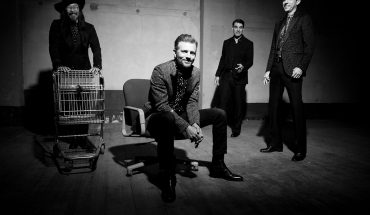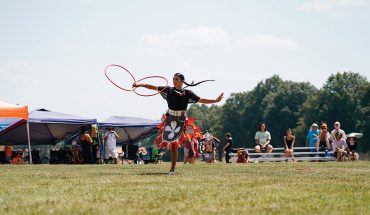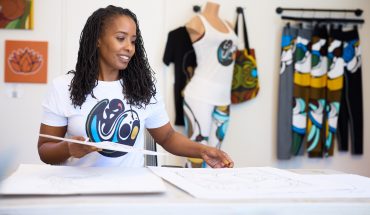by Ann Brooke Raynal
photographs by Doug Van de Zande
There was a tense moment at the Five Points Center for Active Adults one recent Thursday night as Kesano “Kay” Bisset and Steve Catafygiotu reminisced about the war years. The 90-year-old Catafygiotu mentioned that he had flown B24 bombers over Japan during World War II.
“B24 bombers!” exclaimed Bisset, 80, a Yokohama native. “I know those planes! You flew over my city. I was just a girl. We hid from you!”
“And look at us now,” Bisset said to a hushed table. “We are dancing!” She spread an arm out in the direction of the 20-piece Tune Swingers Orchestra and scores of swirling couples. Catafygiotu rose and held out his hand to the tiny woman. The new friends took to the dance floor as the band played Moon River.
Music and dance have always had the power to heal, to bind people together, and to transcend language. Music and dance are inextricably linked in the musical tradition of “big band.” That tradition lives on in the Triangle, where the number of big bands and interest in ballroom dancing continues to grow. The Cavalcade of Triangle Big Bands series – a monthly big band dance party at this Five Points ballroom – is one example, bringing dancers and musicians together on a regular basis.
Popularized in the 1930s by famous bands led by Benny Goodman, Artie Shaw, and Tommy Dorsey, big band music combines traces of jazz with swing and ballads. The music evolved to support ballroom dancing – favorites like the cha cha, rhumba, foxtrot, waltz and tango.
“We don’t give concerts,” says band leader Rollin Glaser. “It’s all about the dancing. All big bands were dance bands back in the ’40s. We don’t play unless people are going to get out on the floor.”
Glaser knows a thing or two about the tradition. He grew up in the big band mecca of Chicago at the height of the swing era. His band’s name, the Tune Swingers Orchestra, is a nod to his father, a drummer and leader of his own band, the Tuneswingers. For Glaser, big band music keeps both personal and musical history alive.
A fully stocked big band requires at least 20 pieces. “People don’t understand how expensive it is,” says Glaser. Most bands feature five saxophone players, four trombones, four trumpets, a rhythm section made up of piano, bass, and drums, and a male and female vocalist. Hiring a full orchestra is expensive, and the musicians don’t get paid much. But still, the area’s big bands are clamoring to play in the Cavalcade series. The last 10 Cavalcade events have featured 10 different area bands. “They always want to know when they can play,” says entertainment consultant Deborah Brown, who has helped put together the series. “They do it for the love.”
The dances are a big draw for older adults, but on the night of Feb. 27, there were more 20-somethings on the floor than octogenarians.
“We are definitely seeing a resurgence of interest in classic ballroom dancing,” Brown says. “Young people who watch Dancing with the Stars want learn those dances!” Brown has also noticed an uptick in young engaged couples who want to wow their wedding guests with a first dance.
 At the first band break, Brown teaches a dance lesson designed to appeal to all skill levels. This night, it’s the tango. She spies two young instructors from the Arthur Murray Dance Center in Cary. Studio Manager Sutton McAffee and dance instructor Ali Ahearn are leading a field trip of 15 Arthur Murray students. Brown asks them to demonstrate both the American and Argentine tango.
At the first band break, Brown teaches a dance lesson designed to appeal to all skill levels. This night, it’s the tango. She spies two young instructors from the Arthur Murray Dance Center in Cary. Studio Manager Sutton McAffee and dance instructor Ali Ahearn are leading a field trip of 15 Arthur Murray students. Brown asks them to demonstrate both the American and Argentine tango.
For the uninitiated, the American dance is more rigid, more staccato in terms of movement. Argentina style is fluid, sensual, and smooth. Brown illustrates: “Remember that scene in the movie Scent of a Woman with Al Pacino? That’s Argentina style!”
After the demonstration, 16 couples form a circle, practice their steps, and receive individual instruction from Brown. “Quick, quick, slow, slooooow, quick, quick, slow,” she claps. “Great line!” Brown compliments a female dancer, whose outstretched leg and raised arm form a graceful diagonal as she leans into her partner’s body.
“Dancing puts the romance back into life,” Glaser says.




